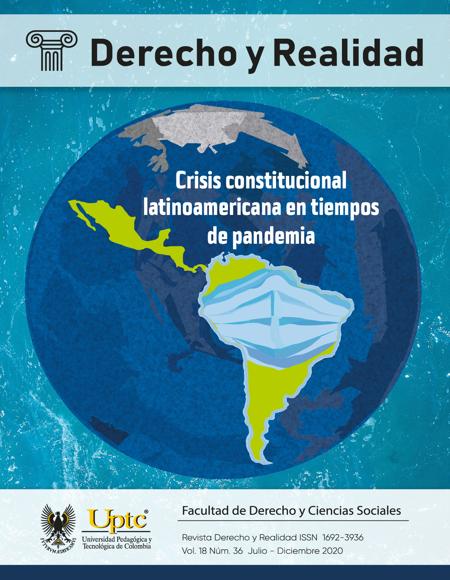Income inequality in Colombia: empirical evidence in the period 1990-2018

Abstract
This paper studies and describes income inequality in Colombia and its average schooling, using cross-sectional data from different specialized databases for the period 1990 to 2018, in order to highlight recent
dynamics of inequality reduction. These dynamics go against the trend of gradual increase in income inequality that developed economies have experienced since 1970. The cross-data show that the apparent
improvement in the average educational level in Colombia, used as a proxy variable for the average level of human capital, is concomitant with the reduction of income inequality.
Keywords
Inequality, Income Inequality, Economics of Education, Colombia
Author Biography
Juan Sebastian Salazar Garcia
Máster en Economía. Universidad Complutense de Madrid - Madrid, España Dirección de correspondencia: Cra 53 #131A-40 Bogotá.
References
- Alvaredo, F., & Gasparini, L. (2015). Recent trends in inequality and poverty in developing countries. Elsevier, 2, 697-805.
- Atkinson, A. (1970). On the measurement of inequality. Journal of economic theory, 244-263.
- Atkinson, A. (2015). Inequality: What can be done? Cambridge: Havard University Press.
- Barro, R., & Lee, J. W. (2013). A new data set of educational attainment in the world, 1950-2010. Journal of development economics, 184-198.
- Bourguignon, F. (2017). The globalization of inequality. New Jersey: Princeton University Press.
- Cornin, G. A. (2014). Falling inequality in Latin America: Policy changes and lessons. Oxfordshire: OUP Oxford.
- Deaton, A. (2013). The great escape: health, wealth, and the origins of inequality. New Jersey: Princenton University.
- Fleurbaey, M. (2008). Fairness, responsibility, and welfare. Oxfordshire: Oxford University Press.
- Gamboa, L. F., & Waltenberg, F. D. (2012). Inequality of opportunity for educational achievement in latin america: Evidence from pisa 2006-2009. Economics of Education Review, 694-708.
- Garay, L. J. ; Espitia, J. E. (2019). Dinámica de las desigualdades en Colombia. Bogotá: Ediciones Desde Abajo.
- Inequality and growth: The cholesterol hypothesis. (2019). Technical report.
- Kuznets, S. (1955). Economic growth and income inequality. The American economic review, 1-28.
- Lustig, N., López-Calva, L. F., & Ortiz-Juárez, E. (2014). Los determinantes de la disminución de la desigualdad en América latina. El desarrollo de América Latina en una era de El Banco Mundial y el Banco Interamericano de Desarrollo, 71.
- Mincer, J. (1974). Schooling, earnings and experience. New York: Columbia University Press.
- Piketty, T. (2014). Capital in the twenty-first century. Cambridge: Harvard University Press.
- Ramos Carvajal, C.; González Rodríguez, M.; Moreno Cuartas, B. (2018). Factores determinantes de la reducción de la desigualdad en la distribución de la renta en países de américa latina. Revista CEPAL.
- Roemer, J. E. (1998). Igualdad de oportunidades. Isegoría, 71-87. » The Cross-national Data Center in Luxenburg. (s.f.). Recuperado de Free access data: https://dart.lisdatacenter.org/dart
- The World Bank. (s.f.). Recuperado de Free access data: https://data.worldbank.org/
- The World Inequality Database. (s.f.). Recuperado de Free access data: https://wid.world/es/country/es-colombia/
- Van de Gaer, D. (1993). Equality of opportunity and investment in human capital (PhD Thesis). Katholieke Universiteit Leuven.